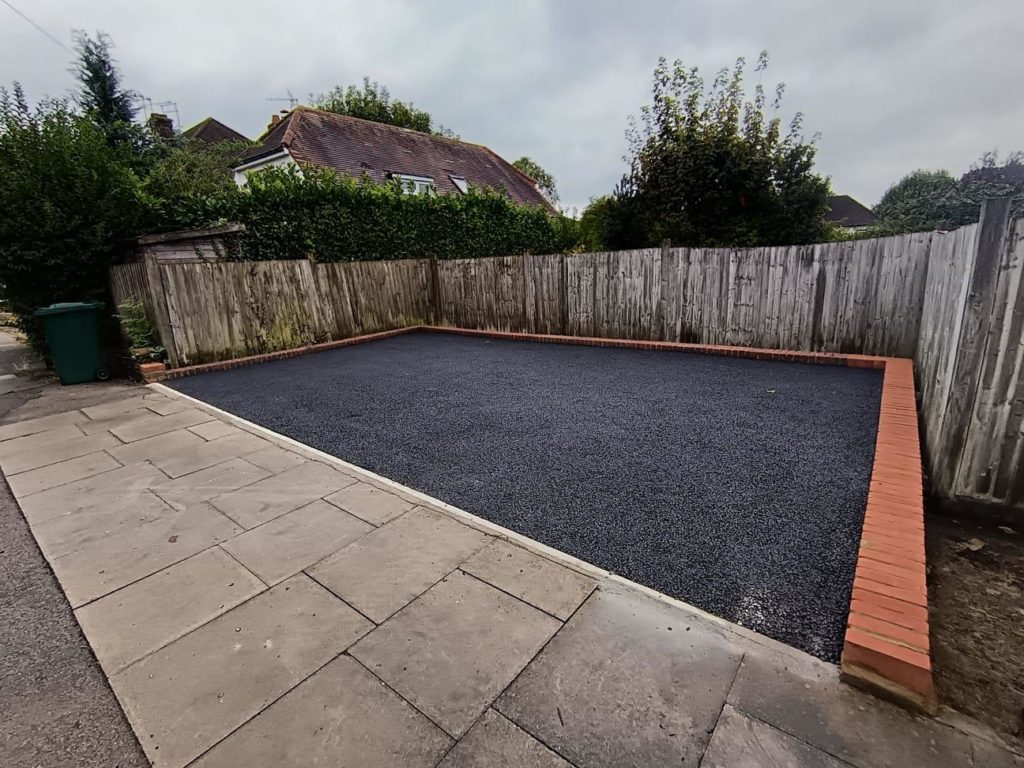A well-laid driveway or patio can last for many years, but nothing lasts forever. If your driveway has seen better days, this guide will help you explore renovation options. Renovating your driveway can be a smart investment, potentially extending its lifespan for years to come.
When Is It Time to Renovate Your Driveway?
If you’ve been gazing out the window wondering whether it’s time for a driveway upgrade, here are some tell-tale signs that it might be time to invest in renovation. Here’s what to watch for with three common driveway materials:
Resin
Resin driveways typically last over ten years. If you’ve had yours for a while, you might not notice early signs of wear. Look for faded colour – comparing it to an older photo can help. Check for dirt and leaf litter, which can encourage weed growth on top (though roots won’t penetrate the resin). If left too long, even surface debris may require a refresh. Regular sweeping and maintenance will help preserve its decorative appeal and UV stability.
Tarmac
Tarmac driveways last about eight years, though fading from black to grey can start after four to five years due to sun exposure. More serious concerns include cracking, surface breakdown, and weed growth in gaps – all signs of ageing. If sections feel brittle or break when tapped, particularly around the edges, it’s time to renovate.
Block Paving
Block paving tends to have the shortest lifespan – signs of ageing can appear after just six years. Weed growth, sunken areas, or shifting blocks often indicate an insufficiently prepared sub-base. This type of surface demands regular upkeep: refilling sand between joints, weeding, and cleaning. Monthly checks can prevent deterioration. If you spot loose bricks or widespread weeds, renovation or replacement is likely needed.
What Affects the Cost of Driveway Renovation or Installation?
A reliable driveway contractor will be transparent about cost factors. Here are some of the most common elements that influence pricing:
Existing Surface
The biggest cost determinant is what’s already in place. Solid surfaces like tarmac, concrete, or block paving are generally easier and cheaper to remove or overlay. Grass driveways, by contrast, are more expensive to replace due to the difficulty of disposing of vegetation-contaminated soil.
Amount of Excavation Required
The more digging involved, the higher the labour and disposal costs. Tree roots, buried rubble, or an incorrectly laid sub-base can all drive up the price.
If your existing surface is simply faded, overlaying may be possible. However, if the driveway is brittle or crumbling, full removal and replacement will be necessary.
Surface Material
The type of surface affects the renovation process. Resin and tarmac can often be overlaid with appropriate preparation, such as priming or applying a binding layer. This can offer significant savings. Block paving, however, always needs to be removed because of its thickness and tendency to shift over time.

Overlay or Replace: Which Is Best?
Starting from scratch isn’t always necessary, especially if the original driveway was well-installed. Overlaying involves laying new material over the existing surface. With the right preparation, this can be more cost-effective than a full replacement. Resin can often be refreshed with a new layer, provided the base is stable. Tarmac and tar-and-chip can also be overlaid, assuming no underlying structural issues.
A simple tip: ask your contractor if your current driveway can serve as a sound sub-base. If so, you could save a significant amount – but not all contractors may suggest this, so be sure to ask.
In contrast, a full replacement is usually needed in specific cases. Block paving must always be removed due to its interlocking design. Tarmac and resin only need to be replaced if they’re crumbling or unstable.

